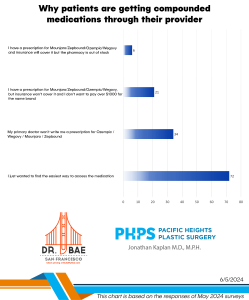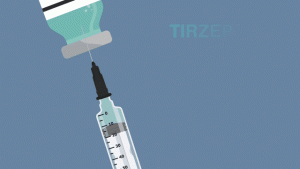Greg:
Hey, this is Greg here from 99 7, now, of course, in Big Bay Mornings. And I’m here with board-certified plastic surgeon Dr. Bae. Man, those titles make us sound very accomplished, Dr. Bae.
Dr. Bae:
I’m very official. I don’t just play a doctor on the radio.
Greg:
No, leave that to me. I will play a doctor on the radio. I do get a lot of questions from people. Some of them, thanks to you, I can actually answer. I can actually answer a lot of lipo questions now, because I’ve asked you so many questions about lipo in the past. But we need you here to really give us the professional’s opinion.
Breast augmentation
Greg:
And what I have been wondering is a lot of women, when they get breast augmentation… Generally, if they’re doing that, they’re wanting to go bigger, right? How do you help them decide which implants to get, how big to go, what’s right for your body? Because I think a lot of people may have one thought in their head, and maybe you see it a different way.
Dr. Bae:
Yeah. I try to break it down to make it as easy as possible and to give them… Basically, I tell them that you have five decisions to make when they come in for a breast augmentation consult. So five decisions. What are those five decisions? One is whether you want saline or silicone. The next is whether you want round or shaped. Third, where you want the incision. Around the edge of the areola, through the armpit, or under the breast? Fourth, whether you want it on top of the muscle or under the muscle. And fifth, what size you want.
Saline vs Silicone
Dr. Bae:
And so, after I tell them, those are the decisions, then we go through and explain each one. So starting off with saline versus silicone, I just tell them the pros and cons. Silicone feels more natural, looks more natural. That is what most people are getting. Saline is less expensive, but it does look more like a balloon and feels a little more firm, whereas silicone, like I said, just feels more natural.
Dr. Bae:
There’s also something with rippling. If you look on the side of the breast of somebody that has a saline implant, you can see this rippling in the skin a little bit more with a saline implant versus a silicone implant. And then, the other thing is that, if you get a hole in the implant, a silicone implant, they’re more of a gel. So even if you get a hole in the shell of it, it can actually keep its shape because it’s a gel. It’s not a liquid. It doesn’t just spill out. Whereas, with a saline implant that gets a hole in it, that’s a liquid, obviously. And that just spills out, and it deflates completely. And then you have to get it replaced, whereas with a silicon-
Greg:
You’ll have a deflated breast.
Dr. Bae:
You’ll have a deflated breast. Whereas, with a silicone implant, because it’s a gel, it keeps it shape. And that capsule or scar tissue that naturally forms around the implant can actually keep it self-contained, so it doesn’t spill all over your body, like the way you’ve heard those kinds of things happening back in the nineties and things like that.
Shaped vs Round
Dr. Bae:
So, that’s the first thing. Second one… And by the way, there’s no right answer to any of these. I just give them the facts, and then they can make the decision. The second one is round versus shaped. So a round implant is kind of what you think. It’s round, where it gives a more fullness up top, which patients really like that, versus a shaped implant. And a shaped implant? It’s got more fullness at the bottom and less fullness up top. So it doesn’t give them that fullness up top. So it looks more natural. Not having a lot of fullness up at the top of your breast is more natural, but patients don’t really want that. They say they want natural, but then, when you get down to the nitty gritty of it, they really want that kind of buxom look up top.
Greg:
Yeah, I’ve noticed. I watch a lot of reality TV, and I noticed a lot of the breasts. They want them here. They want this spilling out.
Dr. Bae:
Up close to their neck, even though they say they don’t.
Greg:
Yes. Yes. They do.
Location of the incision
Dr. Bae:
But anyway, so I give them the option. So, round is more fullness up top. Shaped, less fullness, more natural looking. Then the third option is the incision. And that really kind of depends on a few things. As far as the incision, people talk about going through the nipple. Nobody really goes through the nipple. It’s an incision along the edge of the areola, which actually can be really well hidden between that junction of your natural skin tone and that darker reddish pigment of the areola. And so, you can hide in an incision well, within that.
Dr. Bae:
You can make an incision underneath the breast, which most people do. And there’s the incision through the armpit, which people like because that’s well hidden. The thing people have to understand is that going through the areola, going through the armpit, that even though we prep everything with betadine, make it as sterile as possible, there’s still bacteria down in your sweat glands in your armpit. There’s still bacteria down in the milk ducks of the nipple.
Dr. Bae:
So even though we clean all that up, that bacteria can still get on the implant and possibly cause an infection but more likely cause something called capsular contracture, which is that natural scar tissue that forms around the implant, totally normal on all types of implants. But if it gets too much bacteria there, called colonization, it can make that scar tissue get thick and distort the breast. And that’s called capsular contracture. So that’s less likely if you make an incision under the breast.
Dr. Bae:
But then the downside, potentially, of making an incision under the breast is you could have the implant bottom out. So lots of pros and cons with all these things because, if there was one right way, then everybody would just do it that way.
Over or under the muscle
Dr. Bae:
Then the fourth decision is on top of or under the muscle. And one of the things about going under the muscle, it helps camouflage the implant. So it makes it a little more natural-looking. But the other thing is that thing I was talking about, capsular contracture, where the scar tissue gets really thick and distorts the breast? There’s some suggestion that, by putting the implant under the muscle, it reduces that risk of capsular contracture. So I tend to put implants under the muscle. And it also depends on if the patient has enough breast tissue to begin with, because if they don’t have that much breast tissue to begin with, you probably don’t want to put it on top of the muscle because there’s not a whole lot of skin to camouflage it, and it looks more like a water balloon.
What size implant should I get
Dr. Bae:
And then, lastly, what size? And we just have people try on implants in the office. They bring a sports bra. We have them put in all of the sample implants we have in the office and try them on and see what size they like best. And we go with that. And we usually have a range of options in the operating room the day of, to make sure we have whatever eventuality comes up of what they’re looking for. So that’s the buffet of decision-making and answers and suggestions that I make to them, recommendations. And then, they go from there.
Greg:
You know what? The main key here, again, as we always talk about, especially if you’re doing something like this, research, research, research. Talk to your doctor and then make the best decision for you and your body.
Dr. Bae:
That’s right. That’s right. Thanks for always promoting board-certified plastic surgeons. That’s probably the person you want to go to. They have a lot of experience. They do a lot of training, too. You know, it’s one thing. Anybody can put in an implant, but it’s knowing how to put in the implant, when to put an implant, and what other kind of surrounding issues are involved to make sure you’re making the right decision because, quite frankly, the biggest thing with breast augmentation is the pre-planning, the decisions made before the operation, not the actual operation.
Greg:
And not anybody can put in an implant. A lot of plastic surgeons and a lot of other surgeons can, but not anybody. So that’s why we have you here. And we are grateful for it. Thank you so much, Dr. Bae. Give out all your information, social media.
Dr. Bae:
Yeah. I appreciate the faith you have in me, but yeah. Check me out. Real Dr. Bae. R-E-A-L-D-R-B-A-E, not B-A-Y, on Instagram, Snapchat, and TikToK, and realdrbae.com. Check pricing on there and watch us on social media when we operate, so you kind of know what to expect when you come in for your operation.
Greg:
Absolutely. We’ll see you next time.
Dr. Bae:
Thanks a lot, Greg.
Greg:
Thank you.




